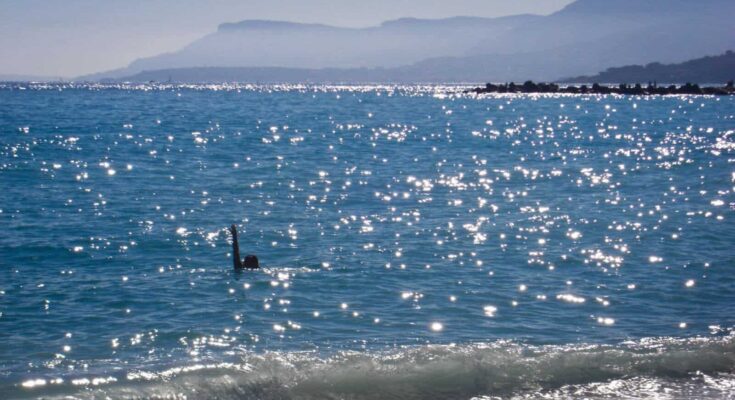Spain’s main marine research center has announced that the Mediterranean’s average daily surface temperature in mid-August set a new record of 28.9°C, highlighting a significant Mediterranean Sea temperature rise.
Record-breaking Mediterranean temperatures and marine heatwaves signal growing ecological concerns
According to climatebook.gr, the highest temperatures are in the central and eastern Mediterranean basin. Sea surface temperatures in these areas range from 29°C to 31°C. In the Adriatic Sea, temperatures exceed normal seasonal levels by over 5°C, while southeastern areas show increases of 2-4°C.
The Ionian Sea also reports high temperatures, with some areas reaching 29°C, contributing to concerns of the impact of rising temperatures on marine ecosystems and invasive species.
Dr. Dimitris Velaoras, a Physical Oceanography researcher at the Hellenic Center for Marine Research (ELKETHE), explained to the Athens-Macedonian News Agency (AMNA) that studies since the 1980s show a sea surface temperature rise of 0.5°C per decade in the Aegean and east of Crete.
“The continuous rise in sea surface temperature is more intense in the Mediterranean, especially from the Ionian Sea eastward. The Levantine and Aegean systems see a surface temperature increase of about 0.4°C to 0.5°C per decade. The rise in lower layers is smaller,” Velaoras noted.
Mediterranean marine heatwaves are also becoming more frequent. According to Velaoras, these heatwaves are short-lived, affecting the first 10 meters of the sea surface and raising its temperature by 5 to 6°C.
“Just as atmospheric heatwaves are temporary, so are marine heatwaves,” he emphasized. “The temperature will rise and then decrease, returning to normal levels. However, these marine heatwaves have become more frequent in recent years, much like atmospheric heatwaves. This is a shock to the ecosystem.”
Record sea temperatures fuel spread of non-native species in the Mediterranean
One major consequence of the Mediterranean’s rising surface temperature is the invasion of non-native species from the Red Sea, which disrupts the ecosystem.
Velaoras explained:
“Until recently, species from the Red Sea couldn’t survive in the Mediterranean because it was too cold for them. But with the recent temperature rise, these species are now migrating and thriving in the Mediterranean.”
Among such alien species are the lionfish and sea bream. Velaoras added:
“The lionfish, sea bream, certain urchins, and sardine-anchovy hybrids are prime examples. If the Mediterranean’s conditions continue to resemble the Red Sea’s, more species will find suitable habitats here.”
The oxygenation of deep waters can be hindered
Velaoras also pointed out that the continuous rise in temperature affects ecosystems on a large scale. It can also impact stratification, making it harder to oxygenate deep waters. He warned that:
“this means water has more difficulty moving from the surface to the depths during cold winters, potentially reducing oxygen levels over decades. If oxygen levels drop significantly, habitats in deeper layers may no longer be sustainable. There’s a risk that if the sea continues to warm, stratification will become more pronounced, making it harder for surface waters to reach the bottom and oxygenate it.”
Along with the rising sea surface temperature, water salinity is also increasing, as are sea levels, though not yet to an alarming degree. Velaoras explained that what would be most concerning would be the impact on climate change if temperatures continued rising at 0.5°C per decade.
In speaking to AMNA, he emphasized that while marine heatwaves may be short-lived events, “they can have serious local impacts.”



